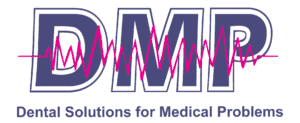“Newly developed technologies and scientifically validated protocols now enable orthodontists to effectively treat people with sleep apnea.”
Dr. David Paquette
“The peer-reviewed literature makes it abundantly clear that untreated sleep-disordered breathing is at best, seriously debilitating and costly to the healthcare system, and at worst, life threatening.”
Dr. Paul Damon
Researcher Nathaniel Marshall, a postdoctoral fellow at the Woodcock Institute of Medical Research in Sydney, said in an American Academy of Sleep Medicine news release.
“The size of the increased mortality risk was surprisingly large,” researcher Nathaniel Marshall said. “In our particular study, a six fold increase means that having significant sleep apnea at age 40 gives you about the same mortality risk as somebody aged 57 who doesn’t have sleep apnea. Our findings … remove any reasonable doubt that sleep apnea is a fatal disease,” N. Marshall continued “People who have, or suspect that they have, sleep apnea should consult their physicians about diagnosis and treatment options.”
Sleep Apnea affects more than 20 million Americans. It is the cessation of breathing during sleep for at least 10 seconds at least five times an hour.
Sleep Apnea can lead to hypertension, heart attack, stroke, depression, muscle pain, fibromyalgia, morning headaches, and excessive daytime sleepiness.
GURNEE, IL, January 27, 2009 /24-7PressRelease/ – The current study from Yale was published in the December 2008 issue of the Journal of Aplied Physiology. A previous study from the same group of Yale researchers found that people with sleep apnea are three times more likely to have a stroke or die than people of similar health who don’t have the breathing disorder. It is estimated that there are over 18 million Americans suffering from untreated sleep apnea.
Patients with sleep apnea had lower cerebral blood flow velocity and notably lower blood oxygen levels during sleep than did apnea free controls. Apnea patients required longer times to recover from drops in blood pressure and longer times to re-establish normal blood flow to the brain. This is indicative of problems with cerebral autoregulation — the process in which the brain regulates blood flow to meet its needs. The repetitive surges and drops in blood pressure and blood flow in the brain seen with apnea leads to people with sleep apnea being more prone to having a strokes and dying in their sleep.
Children with sleep apnea have different treatment protocols. It is estimated that as many as 80% of ADHD cases are tied to sleep apnea and snoring and changes in brain development are known to occur in the presence of sleep apnea. There are no cases where snoring or mild apnea should be ignored, said Jessica Kepplinger, M.D., the study’s lead researcher and stroke fellow in the Dresden University Stroke Center’s Department of Neurology at the University of Technology in Dresden, Germany.
“Sleep apnea is widely unrecognized and still neglected. Patients who had severe sleep apnea were more likely to have silent strokes and the severity of sleep apnea increased the risk of being disabled at hospital discharge.”
